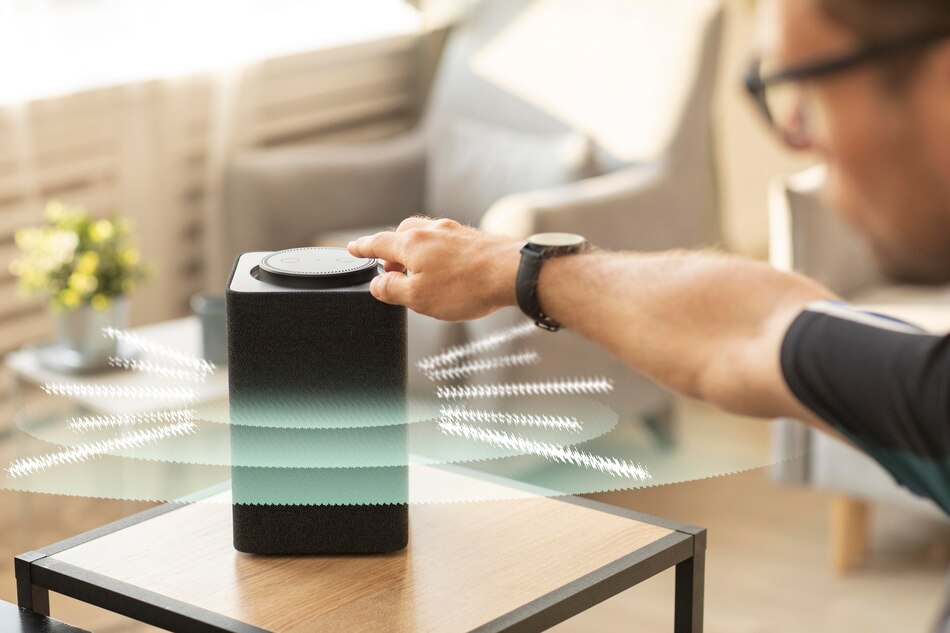During hot weather, you may use your A/C or ceiling fan more often than usual. With cities nationwide facing rising temperatures and energy prices, your smart home may save money. Using smart devices such as app- and voice-controlled plugs, bulbs, and thermostats can lower energy consumption and monthly bills during hot and cold months. Routines, schedules, and other home automation features can improve device efficiency and energy awareness.
Adjust HVAC To Save Energy
The Home/Away Assist feature adjusts the temperature after you leave but won’t cool or heat your empty home unless needed. Heating and cooling are expensive, especially in summer. Record temperatures may cause electric bills to rise by up to 45%.
Installing a smart thermostat, such as the Amazon Smart Thermostat or Nest Learning Thermostat, can overcome this challenge. Both devices learn your habits and preferences to adjust your home’s heating and cooling schedule automatically.
A more efficient home comfort system that uses less energy. Want more thermostat feedback? Google thermostats offer Nest Renew and Seasonal Savings programs to maximize savings. You can also remotely adjust your home’s temperature if you’re away.
Use A Smart Plug To Turn Off Devices Remotely
Use your favorite virtual assistant with this smart plug. Smart plugs are an excellent investment for those who frequently forget to turn off lights, appliances, or coffee makers. They’re convenient at home because they can be paired with smart assistants like Alexa to turn on and off, and they’re great remotely. You can use your coordinating app to turn things off, even when you’re away from home. Kasa smart plugs analyze usage to help you change your habits and use less energy.
Program Outdoor Plugs To Turn On Your Lights And Holiday Decorations Only When Necessary
You can fully utilize the dual outlet for devices with the Wyze Plug. Outdoor smart plugs let you power holiday inflatables and patio string lights only when needed. With two independently controlled outlets and app security features like two-factor authentication, the Wyze Outdoor Plug is a top choice for intelligent outdoor homes.
Make Schedules To Control Energy Usage
The companion app can customize scheduling on many smart devices. For example, a schedule using smart bulbs or switches can turn off the lights automatically if you always forget when you leave home for work at 9 am. You can relax knowing the lights are off without doing it yourself. Smart devices like the Rachio 3 sprinkler controller and smart plugs offer scheduling features to reduce energy usage.
To Reduce Costs, Use Smart Bulbs With Adaptive Lighting
Philips Hue Bulbs are Bluetooth and voice-controlled. Some smart bulbs, such as Philips Hue Bulbs, can automatically adjust brightness in the morning and evening, reducing energy consumption without a set schedule. These bulbs dim automatically based on room brightness or time of day. Lowering the light saves energy and may cool your home on a hot summer day.
Control Lights Remotely With Intelligent Switches
You can control these lights at home from anywhere. Smart light switches can be controlled via the companion app and voice command with a compatible intelligent assistant for those without smart plugs or bulbs. Since smart bulb replacement costs add up, an intelligent switch is cheaper for remotely managing multi-bulb light fixtures.
If the switches are Wi-Fi-connected, you can control the lights remotely, thus always controlling your energy consumption. Smart light switches support schedules and routines. Kasa smart light switches offer energy insights in the iOS and Android Kasa app, making usage monitoring easy.
You Can Restrict Device Use With Geofencing
Geofencing on some smart devices uses your location (with your permission) to determine your home or away status. This turns your smart home on and off when you’re nearby. Take smart thermostats. When geofencing is enabled, your thermostat will lower consumption until you return home.
Smart garage door controllers like the Nexx NXG-200 support geofencing. Set your garage door to open automatically when you arrive home. Garages are frequently the most significant entry to a home and can let in hot summer air and cold winter air in addition to security.
An automated garage door opener with geofencing and other intelligent features can remotely control your door to keep unwanted air out and the temperature regulated, preventing your HVAC from overworking. As it thinks for you and turns devices on only when needed, geofencing saves energy without thinking.
Consider Solar Or Battery-powered Smart Home Devices
Battery-powered devices like the Ring Video Doorbell 4 save energy and last longer. Not all smart home devices need wires. Rechargeable batteries in security cameras, smart floodlights, and video doorbells like the Ring Video Doorbell 4 and Eufy Cam Pro 2 Floodlight are eco-friendly and last six to 12 months when fully charged.
How many moments of motion your camera captures daily will affect battery life. More events drain the battery faster. Don’t worry about your battery dying suddenly. You’ll get notifications when you need to charge. Other options include solar panels.
Smart home devices powered by batteries can reduce energy usage, but solar power can be more efficient. Ring’s Solar Pathlights stand out among other solar-powered smart home products as more brands enter the market. These solar-charged walkway lights provide motion-detection smart alerts.
